Tech Tips for Planters
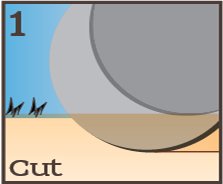
Cut residue and soil to create the furrow of the proper depth.
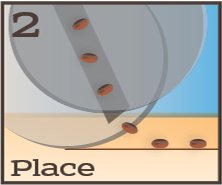
Place the seeds consistently into the bottom of the furrow.
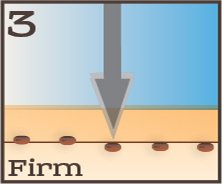
Firm the seeds by applying the right amount of pressure exactly where it is needed.
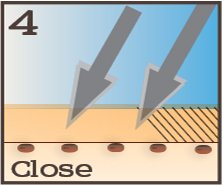
Close the furrow by chopping the sidewall, to prevent drying and allow good root exploration.
For John Deere, Kinze, AGCO White, and Similar Planter Row Units:
- Avoid disturbing the path of the opener. Coulters pull up mud, create air pockets, and worsen the potential for crusting. Fertilizer openers should run at least 4 inches off to the side, and preferably no deeper than 1.5″.
- Row cleaners shouldn’t move soil and should only move a portion of the residue.
- Opener blade flex results in a furrow of variable shape and depth, often with the lower portion becoming a pinched unusable slit (zero blade flex would create a 5/16-inch-wide furrow bottom). Blade flex can be reduced by replacing the 3 mm disks with 3.5 mm blades (already standard on some newer planters). Note that 3.5 mm disks cannot be shimmed as tightly together as the more flexible 3 mm blades. Heavy-duty bearings on some models (e.g., Deere’s XP row unit) also reduce blade flex. While intended to limit blade flex, standard OEM seed tube guards can wear substantially in just a few hours of use (esp. older JD & Kinze). However, Valion™ (VAL-yon) seed tube guards from Exapta will eliminate seed tube wear and greatly reduce blade flex to create a properly shaped furrow and improved planting depth control. Note that the depth adjustment may need to be set shallower with these improvements.
- Sidewalls should remain intact until the seed is placed. Indented gauge tires (reduced inner diameter) allow more lifting, which may adversely affect placement and firming.
- A separate firming device such as a Keeton is crucial when running spoked closing wheels (which do little or no packing). Keetons should generally be set to the maximum tension, and some models exert more pressure than others. Keetons often need to be replaced annually, since the material weakens from sunlight and moisture. Check pressure by comparing the “snap” to a new firmer. Better yet, see our Mojo Wire for Keetons, which provide up to 5 times the pressure of new Keetons.
- Furrow closing should shatter both sidewalls and cover the seed adequately and consistently. Since the seed has already been firmed, it’s desirable that the fill be loose, not packed.
Perfect Seed Placement
This photo represents perfect seed placement in a no-till seed bed. Loose material over the seed is easily brushed away to reveal the seed ‘locked into’ the bottom of the ‘v’ —it is tucked in tightly & would need to be pried loose. The upper portion of the sidewalls created by the opener blades has been completely broken up by the closing system, but the very bottom of the ‘v’ is undisturbed. If you excavate several rows and find that all the seeds are being placed like this, you can be assured that you are doing a good job (although it would be wise to periodically check at various locations)—if not all the seeds are being placed properly, it is time to do troubleshooting. (Note that in very wet high-clay soils, the sidewall will not crumble this completely but will still be disrupted.) The germinating seed and seedling first encounter an environment created by your seeding equipment. In addition to controlling depth and spacing, your seeding equipment and attachments affect the uniformity of seed-to-soil contact, and the amount and condition of the soil placed over the seed. This environment determines the rate of air and water exchange during germination and early growth, as well as the resistance the seedling encounters during emergence and root system development. Proper agronomic placement of all the seeds is extremely important for optimum emergence, early growth, and eventual yield. The following characteristics are desired for every seed planted: (1) the seed is adequately firmed into the moist furrow bottom at a consistent depth; (2) the furrow sidewall is shattered to cover the seed uniformly with loose fractured soil.
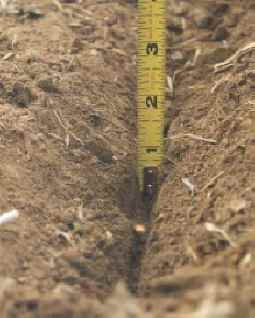
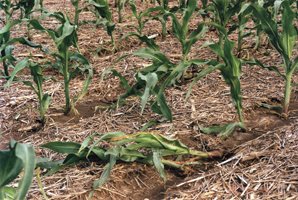
Should You Use Indented Gauge Tires?
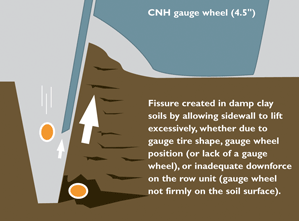
The idea of installing CNH (also called Reduced Inner Diameter) gauge tires on JD, Kinze & White planters has been around a couple decades, and widely touted for improving the ability to close the furrow and reducing sidewall compaction. While both are true, we’d like to point out that these gains sometimes come at the detriment of seed placement (and firming).
The RID tire allows the sidewall to lift while the opener blade exits the soil. This results in tearing of the sidewall, creating crevices of various sizes. Seeds may bounce into these. In-furrow firming devices (Keetons or seedlock wheels) don’t engage the seeds located under the sidewall—and without any firming, these seeds may not germinate until a rain. Also, the seeds in or under the sidewall must either grow up through the chunks of sidewall or divert over to the remnants of the vertical slit. Either way, these will be much delayed compared to seeds in the ‘v’ (which grow directly upwards), and they might not emerge at all if the sidewall chunk is very dense.
If you find seeds in sidewall fissures, this might be the culprit. If your seedlings don’t emerge at the same time, you might want to investigate this. Also, there’s a telltale zigzagging of the seedlings along the row.
For more details and recent developments in the planter world, see our newsletter on this topic.
